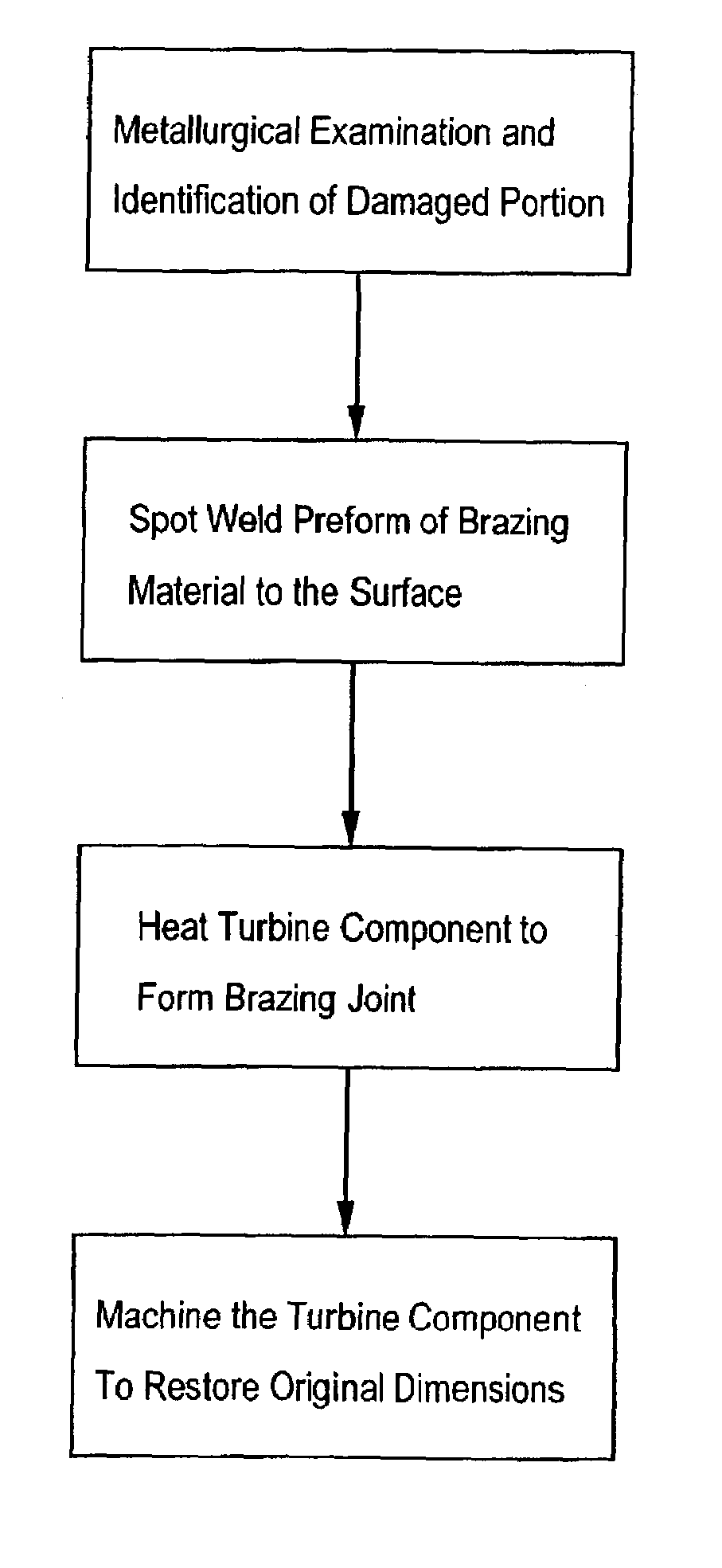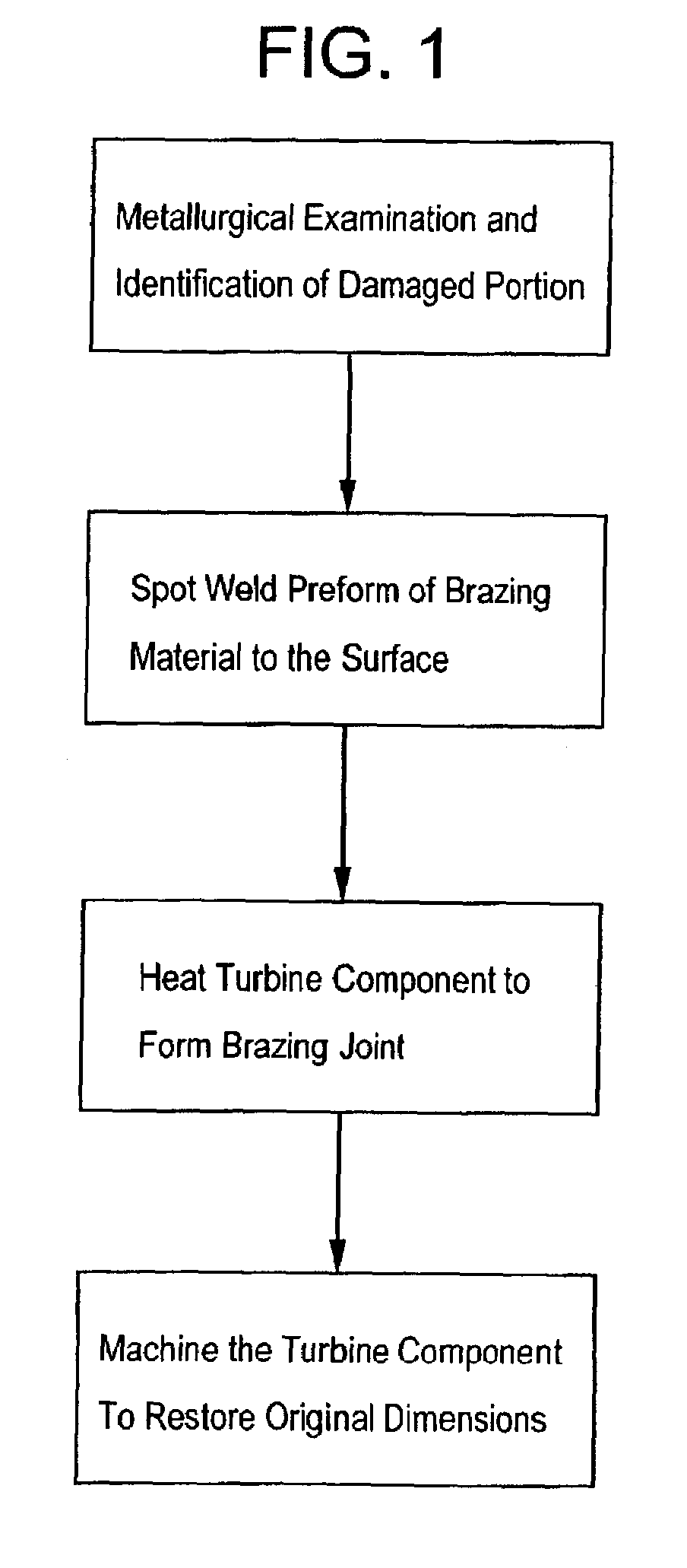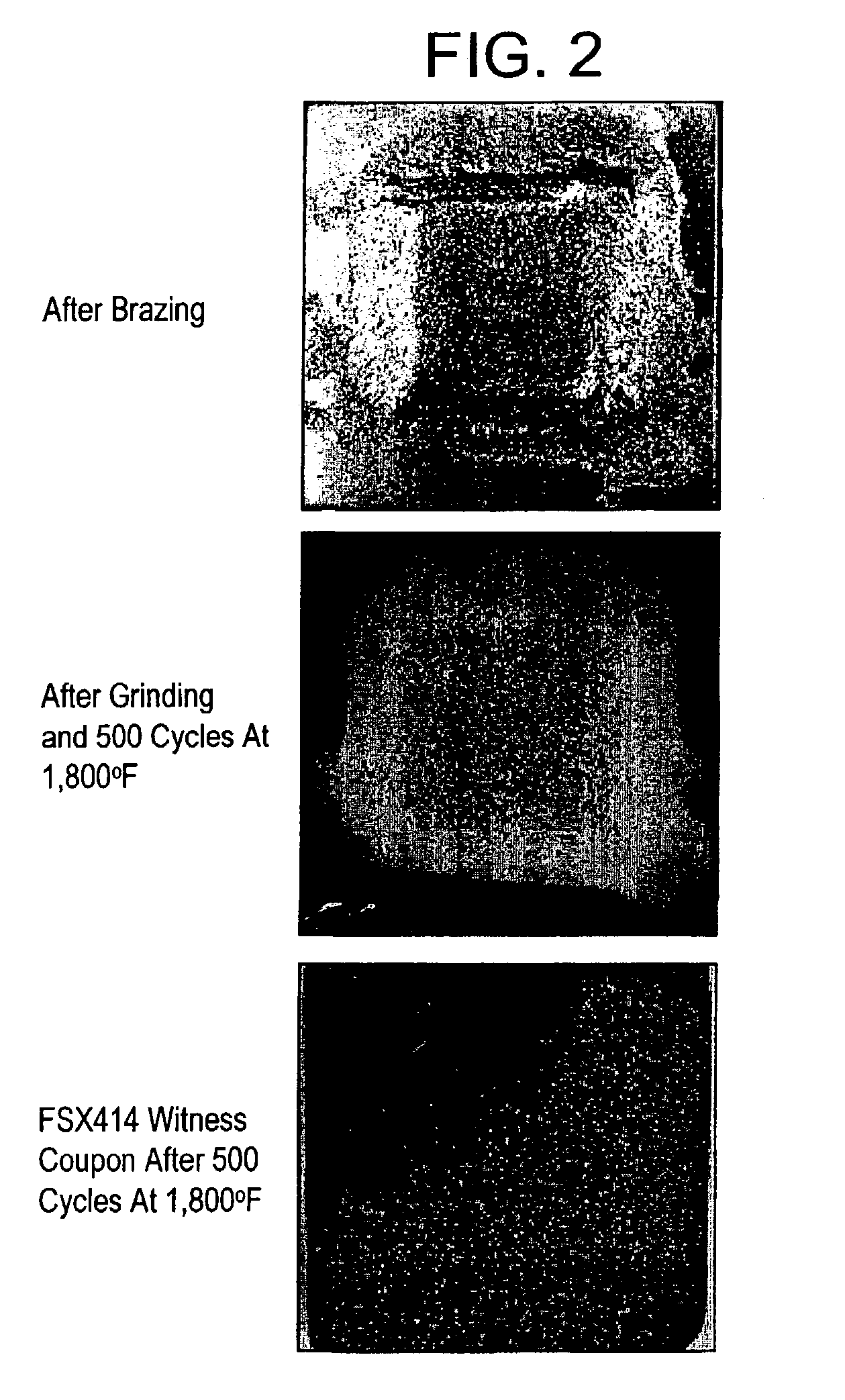Process for repairing turbine components
a technology for turbine components and components, which is applied in the direction of engine starters, machines/engines, and machine/engines, etc., can solve the problems of loss of turbine operating efficiency, thermal expansion and thermal expansion wear of exposed parts of turbine components, and cyclic loading of thermal expansion and hot gas flow,
- Summary
- Abstract
- Description
- Claims
- Application Information
AI Technical Summary
Benefits of technology
Problems solved by technology
Method used
Image
Examples
example 1
[0029]In this example, presintered preforms of a brazing material and a metal alloy substrate were used to simulate a repair of a turbine component. A 1-inch by 1-inch cavity was milled into an alloy substrate, commercially available under the tradename FSX414 from Howmet Castings. The presintered preform was a commercially available brazing alloy under the tradename X40 / D15 from the Aerospace International Materials, Inc. The brazing alloy was obtained as a preform having the following dimensions: 4 inch by 4 inch by 60 mils. FIG. 1 illustrates the process flow for brazing the preform to the FSX414 substrate. Prior to processing, the FSX414 substrate was exposed to hydrogen gas at 2100° F. for about 2 hours. In addition, a paste was applied to the seams formed between the spot welded preform and the substrate. The substrate and preform were then stepwise heated from about room temperature to about 2100° F. and cooled back to room temperature. The applied braze filler metal past, ob...
example 2
[0030]In this example, a section of a nozzle was removed and subjected to the brazing process as in Example 1. After brazing, the surface was machined to its original dimensions. FIG. 3 illustrates a plan view of the nozzle section, with the location of the replaced section identified. The micrographs clearly show that the openings are substantially unaffected by the brazing process.
example 3
[0031]In this example, tensile strength was measured at room temperature and at 1,500° F. The test structure dimensions are shown in FIG. 4. FSX414 alloy was employed as the base metal. The brazing alloy was the X40 / D15 alloy. The brazed joint was formed as defined by the brazing process of Example 1. A comparison of the test structure with and without the brazed joint (the parent component by itself and configured in the shape as dimensioned for the test structure) was made. Tensile strength measurements were made on an Instron Model No. 1125 screw driven frame at 0.02 inches per minute. The results are shown in Table 1, which clearly show that tensile strength, yield stress, and percent elongation for the brazed material was about same or stronger than the parent material by itself. The results demonstrate that brazed joint provided structural soundness to the structure equivalent or better than the parent structure.
[0032]
TABLE 1Temperature0.2% YieldUltimate TensileElongation toMa...
PUM
| Property | Measurement | Unit |
|---|---|---|
| Temperature | aaaaa | aaaaa |
| Melting point | aaaaa | aaaaa |
Abstract
Description
Claims
Application Information
 Login to View More
Login to View More - R&D
- Intellectual Property
- Life Sciences
- Materials
- Tech Scout
- Unparalleled Data Quality
- Higher Quality Content
- 60% Fewer Hallucinations
Browse by: Latest US Patents, China's latest patents, Technical Efficacy Thesaurus, Application Domain, Technology Topic, Popular Technical Reports.
© 2025 PatSnap. All rights reserved.Legal|Privacy policy|Modern Slavery Act Transparency Statement|Sitemap|About US| Contact US: help@patsnap.com



